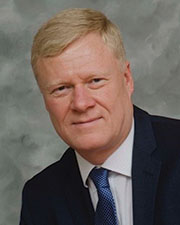Appraising office buildings with densification obsolescence - by Thomas Jensen

Boston Appraisal & Consulting, LLC
As employers continue to squeeze more workers into less office space, appraisers need to take into consideration the various forms of obsolescence created by this new workplace densification.
The average amount of square feet occupied by one office worker was 250 for several years. As of 2018, the national average was 194 s/f per employee, which is down 8.3% since 2009. The square footage per worker varies with the more expensive markets having less space per employee.
Boston-area brokers and landlords report the average office worker now occupies roughly 175 s/f. Therefore, a 100,000 s/f office building that traditionally housed 400 workers now houses 571. The roughly 40% increase in the number of people working in the building puts stress on parking capacity, vertical circulation, restrooms, electrical loads and other mechanical systems.
So how can landlords accommodate the increased load demands? What happens if the remaining space in a building becomes unleasable due of these inadequacies?
First, ownership needs to identify whether these inadequacies are impacting space marketability. Second, ownership needs to identify whether these inadequacies are financially feasible to correct. What would be the cost to cure? In appraisal terms, do these inadequacies represent a curable or incurable obsolescence.
Most municipalities still require four parking spaces per 1,000 s/f for a suburban office use. An existing office building may be compliant with current zoning bylaws, but the building is likely to be partially unleasable given current density trends. Restriping the surface lot would likely result in only a nominal increase in the parking count. Owners sometimes buy abutting sites in order to expand surface parking. Some owners offer shuttles to and from satellite parking facilities similar to those offered to nearby transit stations. Dedicated carpooling spaces and bike storage areas are also becoming more common.
Sites with grade changes may allow for a parking deck to be constructed at a lower cost that a more traditional parking structure. The addition of parking structures may result in a curable functional obsolescence if the construction cost does not exceed the added value to the property.
The construction of additional elevators, stairwells and restroom stalls may not be physically possible. Therefore, representing an incurable obsolescence that would need to be addressed in appraisal perhaps through a high structural vacancy rate used in the income capitalization approach.
The replacement of electrical and other mechanical systems is required over time whether or not the building’s current systems are adequate for an increased density. The effective age of these systems compared to the estimated economic life would be a factor in identifying a potentially curable obsolescence versus increasing a capital reserve expense.
The appraiser is not typically qualified to estimate the cost to cure these potential obsolescence items. Landlords often provide contractor cost estimates that may be used as deductions in the valuation analysis. The appraisers should apprise the client of any obsolescence issues and proposed capital deductions prior to delivery of the report. These deductions would need to conform to the potential underwriting of loan documents by a financial institution. An extraordinary assumption should be used stating that source of the capital expense estimate and that any change to the reported expense would have a direct impact of the property valuation.
Often it is not known whether correcting these potential obsolescence issues is physically possible or what the associated cost may be. Once again, the use of a clearly identified and client-approved extraordinary assumption may be required in the report.
At some point in the future, on-site parking capacity may be less important with the eventual arrival of driverless cars. The technology behind these vehicles is still being tested, but may be available to consumers within ten years. The use of self-driving vehicles may allow people to park at a distant lot and call for the car when they’re ready to leave.
Until then, appraisers need to take into consideration the various forms of obsolescence created by the new office workplace densification through identification, determining whether the issue is curable or incurable and considering the use of capital deductions and extraordinary assumptions.
Thomas Jensen, MAI is principal and executive director of Boston Appraisal & Consulting, LLC






.png)
